Should a Roof Vent Pipe Be Covered? Pros & Risks
Author: Omar Alonso | Editor: Omar Alonso
Review & Research: Jen Worst & Chris Miller

Do you have plumbing vents on your roof? They keep the sewer gases out of your home, and you'll notice that some installations have caps and others don't. What's the difference between a covered and uncovered roof vent? Should a roof vent pipe be covered or uncovered?
What Is a Plumbing Roof Vent?
A plumbing vent extends from the waste pipes in your home to the building's exterior. In most installations, the vent pipes protrude through the roof. The vents release sewer gases outside, keeping them out of your home. Otherwise, it would smell pretty terrible inside and present a huge health risk.
Vent pipes also allow oxygen to enter the plumbing system, assisting with the growth of beneficial bacteria that break down waste. The vents help keep the air pressure consistent and even on both sides of the trap while maintaining the water level.
If the air pressure becomes unbalanced, the pipe with the lower pressure will suck the water back, making the balance in the lines unequal. The plumbing in your home relies on equal pressure balance throughout the system.
When water moves through the plumbing system, it pushes a pressure head in front of it, creating positive pressure. So, the pipes need to relieve the pressure in the system, or they risk the positive pressure displacement created by water moving through the system pushing back on the water.
When the air pressure pushes the water backward, it causes it to back up into your home through the drains. Similarly, if the air isn't replaced behind the water as it moves through the plumbing vent, it creates negative pressure in the pipes. The negative pressure sucks the water from the trap.
In most installations, the plumbing vent operates efficiently without a covering. Adding a cap to the vent could create a pressure imbalance over time, resulting in the issues discussed. For optimal operation, the plumbing vent must be open to allow for equal air pressure balancing in the system.
Vent boots or caps can lead to inefficiencies in the plumbing system. If you're considering adding a vent boot or cap to your plumbing vent, consult a professional before executing the idea – you might reconsider after getting expert advice.
How Do Plumbing Vent Pipes Work?
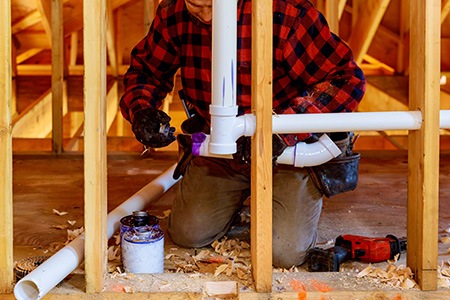
A plumbing vent pipe, also known as a drain-waste-vent (DWV), assists with maintaining optimal air pressure in your home's plumbing system. Plumbing vents differ from wastewater drain pipes; they expel sewer gases outside the home while drawing fresh air into the plumbing system.
This operation ensures proper water flow and drainage through the pipes. Plumbing vents also prevent the formation of a siphoning or vacuum effect that disrupts the balance and sealing effect of water in P-traps throughout the home.
The P-trap is the U-shaped fitting found under sinks in the kitchen, bathroom, and laundry. They serve the role of preventing sewer gases from entering the home through the drains.
Can You Leave a Plumbing Vent Pipe Exposed?
Should a roof vent pipe be covered? Yes. Is it a must? No. You can leave the plumbing roof vent exposed, and most homeowners don't have any problems with this setup. However, it also presents the risk of dirt, debris, and pests entering the pipe, where they can cause damage to the plumbing system.
If the vent pipe is open, rain and snow can enter. A roof vent pipe also produces noise, and some can be loud, causing issues with the neighbors. Covering the vent pipe with a "boot" helps to dampen the noise and stop rain and snow from entering the lines.
Using a boot to cover the roof pipe also stops pests from entering the plumbing system where they cause damage. An uncovered roof vent has a service life of up to 20 years, but covering it with a boot increases its longevity.
What Is a Vent Boot?
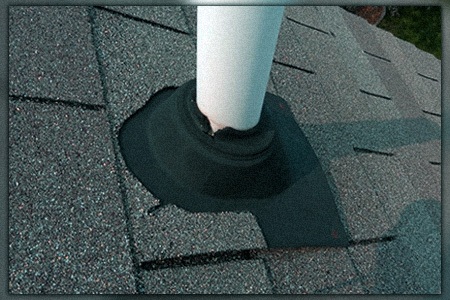
The venting boot covers the vent pipe. This plumbing roof vent cap doesn't seal the line, as it has an opening that faces down towards the roof or is angled off to the side. The purpose of the boot is to prevent rain, snow, and pests from entering the plumbing system through an exposed opening.
Most vent boots feature design and construction with flexible, durable rubber materials. This design makes it easy for the vent boot to expand and contract with the pipe as the weather conditions change. However, the rubber is also perishable and eventually starts to crack, requiring replacement.
Here are a few examples of how to tell if your roof vent boot needs replacing:
- The wallpaper inside your home starts peeling
- The paint on the exterior walls starts cracking
- The shingles surrounding the vent pipe begin to crack or show signs of damage
- You find water marks or damage on the walls and ceiling in your home
In my opinion, a roof vent boot of some kind is an absolute necessity. There’s nothing to gain from allowing water into your vent pipes, and only harm that can come from it.
What If the Roof Vent Pipe Gets Blocked?
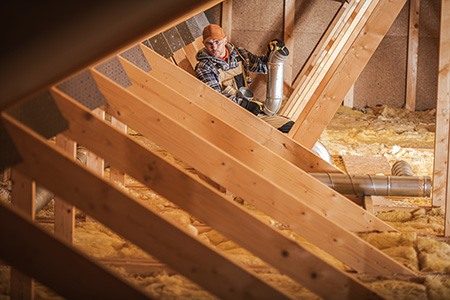
If the roof vent pipe experiences a blockage, it starts causing issues with the plumbing system. You'll need to clear out the blockage immediately to restore the integrity and optimal function of the plumbing system. You'll notice the following issues occur if there's a blockage in the roof plumbing vent pipe.
Dry P-Traps
A blockage in the roof vent pipe can cause your P-traps under the sinks to run dry, which you may confuse with a leaking p-trap. As a result, sewer gases start to enter the home, and you'll notice a foul smell in the room, concentrated around the sink. These gases carry bacteria with pathogenic properties.
People with allergies or sensitivity to microorganisms might start experiencing symptoms of their condition. The biggest giveaway of a dry P-trap is the smell in the room.
Slow Draining Sinks & Bathtubs
A blocked roof vent pipe can cause the slow draining of sinks and bathtubs throughout the home. If you plunge or snake the drains and can't find clogs, the plumbing roof vent is likely blocked and needs clearing. So should a roof vent pipe be covered? We're building up more evidence that it should be.
Gurgling in the Toilet
It's common for toilets in the home to start producing a gurgling sound when there's a blockage in the plumbing roof vent, which is why we suggest a toilet vent cap. A bathroom vent pipe cover will help prevent this, one of the most annoying issues, in your home.
If there's a pressure imbalance in the plumbing system, the water flushing away in the toilet doesn't have any pressure in the pipes, and the air building up in the system can't escape, causing it to make this noise. Your toilet venting option that leads to a roof vent will need a cap.
A Roof Vent Boot Might Cause Issues
Homes in regions of the United States that receive low temperatures may experience snow or ice blocking the roof vent boot or cap. The underside of the boot might become choked with ice buildup around the outlet, causing a blockage.
Other Types of Roof Vent Pipes
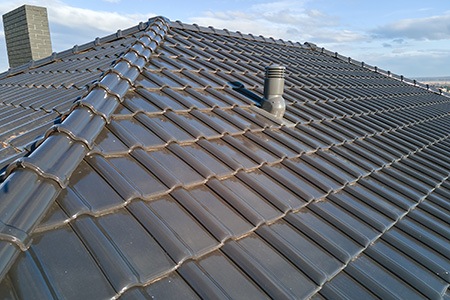
There are several types of roof vent pipes. Their design and use vary depending on local building codes and the air and plumbing systems used in the house. Here are the common types of roof vent pipes. Please take note that in most cases you should employ the services of a professional roofing contractor to install these vents.
Plumbing Vent Stacks
We've already discussed the plumbing vent pipe and its role in keeping sewer gases out of your home. These pipes balance the air pressure in the plumbing system, ensuring efficient operation.
Attic Fans
Some attics have exhaust fans to remove the warm air building up in the space. These types of fans pull the air through ducting, releasing it through a vent stack exiting on the roof. Typically, attic fans are common in warmer climates, such as the southern states, where summertime temperatures push the mercury to the high range.
HVAC Vent Stacks
Some homes rely on HVAC systems to control the climate inside the residence. The HVAC vent stack releases warm air and allows for the expulsion of gases from the boiler, burners, water heater, and fireplace.
Small Vent Boxes
These vents suck moisture and warm air out of bathrooms, reducing humidity in the space to prevent mold growth. They're also used as exhaust ports for dryers to vent the warm air or gases outside the home. Depending on its configuration, a dryer vent might exit on the roof.
Can You Fix a Blocked Roof Vent Pipe Yourself?
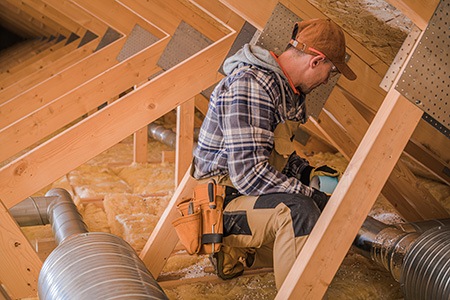
If the roof vent boot has ice around it, you can clear these problems yourself with a ladder, the right tools, and safety equipment. However, if you experience a vent pipe blockage affecting the plumbing system, it's best to call a professional.
Attempting to rectify the problem yourself might lead to you exacerbating the problem, causing further damage. Call a professional, and they'll find and fix the problem.
Key Takeaways Regarding Plumbing Vent Caps & Covers
Let’s recap the main points above about plumbing vent stack caps with the summary below:
- The roof vent pipe is an important part of the plumbing system. It helps sewer gases pent up in the pipework to escape into the atmosphere, keeping them out of your home.
- The roof plumbing vent pipe also maintains the pressure balance in the plumbing system, ensuring the effective operation of the drains around your home.
- Most plumbing vent pipes are open at the top. While this allows for effective and efficient operation, it also presents the risk of rain, snow, and pests entering the pipe.
- Fitting a vent boot to the pipe stops rain, snow, debris, and pests from entering the plumbing system where they cause damage.
- If you experience a blockage in the roof vent pipe, call a plumber for assistance with resolving the issue.
Obviously you can tell we want gases to vent from inside the pipe and water to stay out. That’s the purpose of a roof vent cap and why you want them.
So, Should a Roof Vent Pipe Be Covered?
Do plumbing vents need caps? Yes, a sewage vent cap is a necessity to keep the balance of pressures steady and to keep it free and clear from debris and even birds and bugs so gases can vent freely. Should a roof vent pipe be covered? Absolutely.



